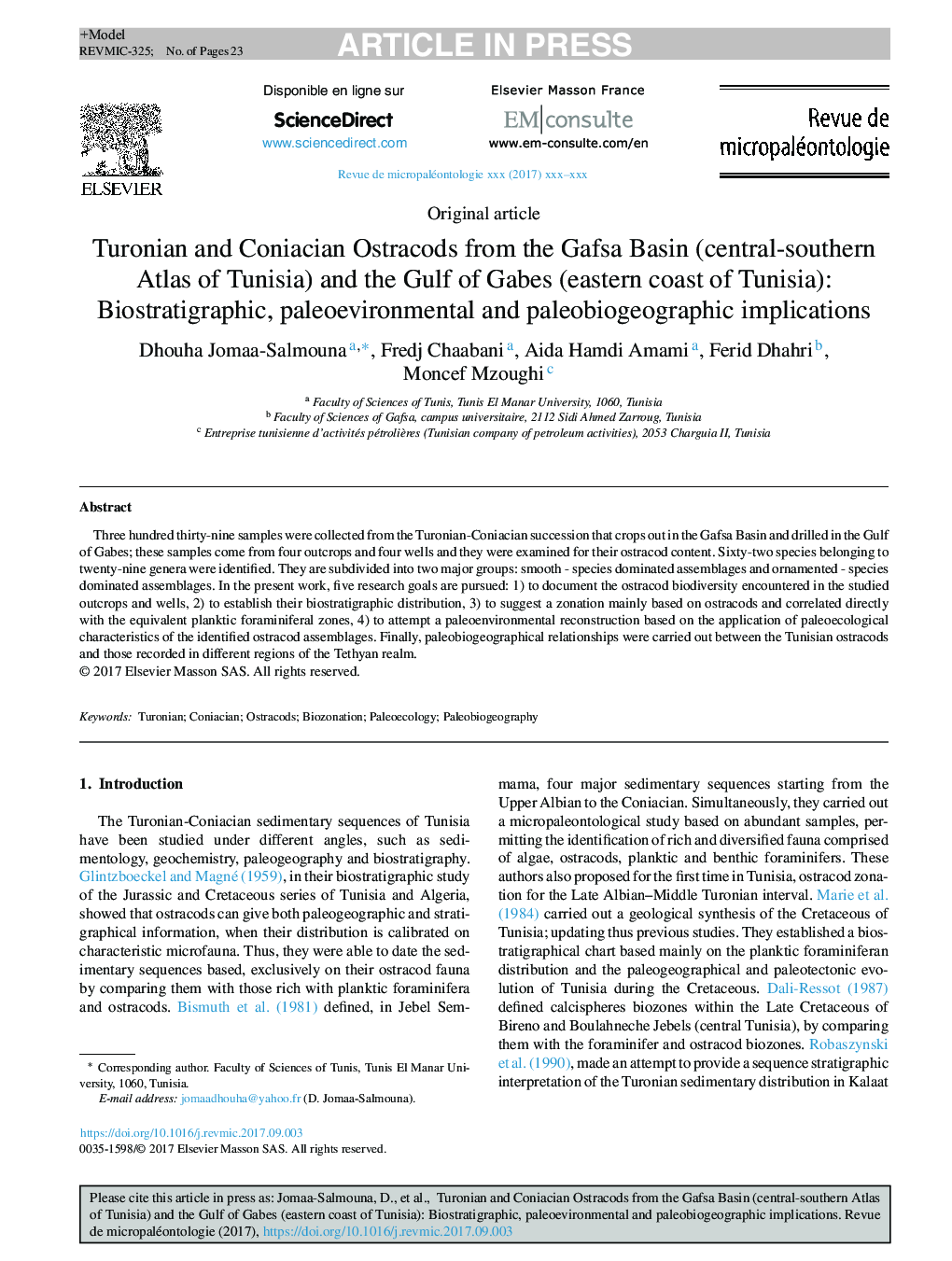| Article ID | Journal | Published Year | Pages | File Type |
|---|---|---|---|---|
| 8916678 | Revue de Micropaléontologie | 2017 | 23 Pages |
Abstract
Three hundred thirty-nine samples were collected from the Turonian-Coniacian succession that crops out in the Gafsa Basin and drilled in the Gulf of Gabes; these samples come from four outcrops and four wells and they were examined for their ostracod content. Sixty-two species belonging to twenty-nine genera were identified. They are subdivided into two major groups: smooth - species dominated assemblages and ornamented - species dominated assemblages. In the present work, five research goals are pursued: 1) to document the ostracod biodiversity encountered in the studied outcrops and wells, 2) to establish their biostratigraphic distribution, 3) to suggest a zonation mainly based on ostracods and correlated directly with the equivalent planktic foraminiferal zones, 4) to attempt a paleoenvironmental reconstruction based on the application of paleoecological characteristics of the identified ostracod assemblages. Finally, paleobiogeographical relationships were carried out between the Tunisian ostracods and those recorded in different regions of the Tethyan realm.
Related Topics
Physical Sciences and Engineering
Earth and Planetary Sciences
Palaeontology
Authors
Dhouha Jomaa-Salmouna, Fredj Chaabani, Aida Hamdi Amami, Ferid Dhahri, Moncef Mzoughi,
